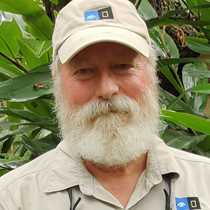Corsica, France
Today, we began what should be two days exploring the fourth largest island in the Mediterranean Sea…Corsica. We have a consensus among the staff that this is the most interesting island, at least from a natural history point of view, in the entire sea. It is certainly the greenest island in the Mediterranean, and arguably the most scenic. Fortunately, much of the terrain is now protected in nature reserves and national parks.
The National Geographic Explorer anchored off Porto during breakfast and we quickly commenced clearance procedures for our entrance into France. It is interesting that although the island is indeed officially part of France, the Corsicans consider themselves somewhat autonomous, if not independent. In short order, we were cleared and then made a landing in the protected little harbor and set off to see some of the sights of the western part of the island.
Corsica is very rugged, especially this side of the island, and our coaches took us for a wild ride on the very serpentine mountainous road (with lots of switchbacks) into the interior. Much of the island is covered by what is known as Macchia flora and we observed (and smelled) many flowering plants right along the road, including wild garlic, cyclamen, rock rose, heather, and gorse.
Our quest was the delightful, isolated, and picturesque town of Piana. With its narrow streets, old stone buildings, and laid-back eating establishments, Piana is everyone’s ideal of a quaint, out-of-the-way community (see Figure A). We had some free time to walk around the town and many people said they would love to come back and stay here for a while.
On the way back to Porto, we stopped the buses on the main road to give people a chance enjoy a leisurely one-kilometer walk through the incredibly scenic Les Calanques (pronounced Caw-launk), where everyone was suitably awed by the spectacular formations of highly-eroded red granite (see Figure B). If anyone didn’t get great photos of this place, it was his or her own fault. Some people commented on how much they enjoyed the clean mountain air.
After lunch, we anchored the ship in a nearby protected little bay for an afternoon of beaching, kayaking, and some very serious hiking. The hikers landed at a rocky little bay, separate from the main landing site at a sandy beach, and began a two-hour hike towards a Medieval watch tower high atop a promontory 340 meters (1,100 feet) above sea level. We pushed our way through dense foliage and followed indistinct animal trails to reach the main hiking trail, but did not have enough time to make it all the way to the tower. Actually, a few of us got pretty close by climbing up a very steep, boulder-strewn slope below the tower and were afforded a spectacular view in all directions from this vantage.
We made one more stop later this evening, when the ship berthed in Ajaccio for a few hours to give us a chance to enjoy a little bit of Corsican Saturday nightlife before sailing at midnight. As a matter of interest, Ajaccio is the birth site of Corsica’s favorite son…Napoleon Bonaparte.




